There’s only one thing—well, four, technically—that connect your RC car or truck to the ground. Of course, I’m talking about the tires, which are inarguably critical in how well your rig handles. I’ll say it here, and I’ve said it for years: Tires, whether you’re out rock crawling, racing or bashing, are the most important part of any setup.
The old saying goes, tires are tuning and everything else is fine-tuning. That’s as true today as it was back in the day. Get your tires right and it will be much easier to figure out everything else. Hopefully by now I’ve convinced you tires are important. Read on and learn the ins and outs of RC tires.
VENTING
When a full-size tire gets vented, it’s a problem, so it’s understandable that the “vent or not to vent” question is still frequently asked. To cut right to the chase, always vent your tires. If you don’t, they will act like beach balls and bounce instead of grip. Also, whether mounted on multi-piece beadlocks or glued to a single-piece wheel, tires are rarely airtight. A vent hole allows the tire to consistently compress and expand. If your tires aren’t vented and you hear air escape as you squeeze them, they are unlikely to return quickly or consistently to their normal shape without proper vents.
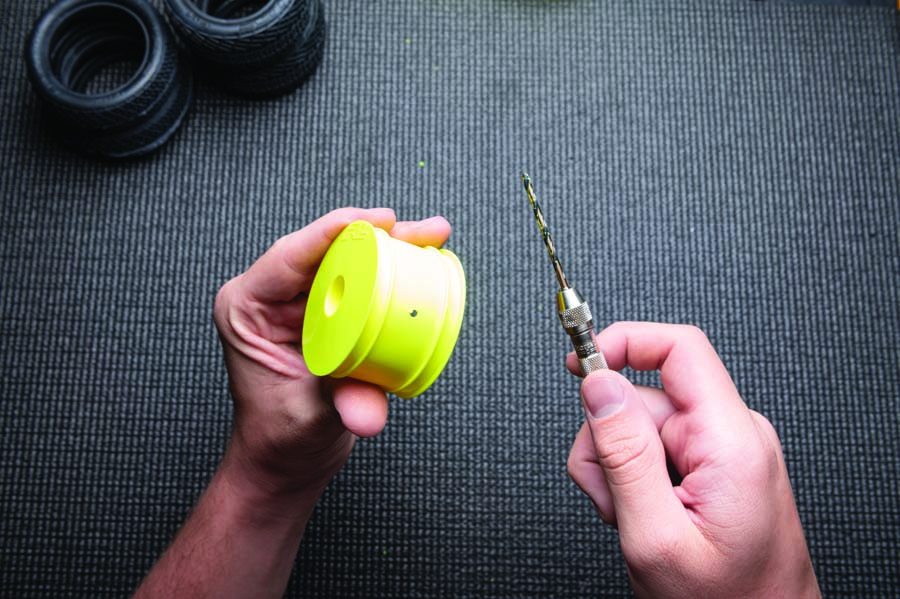
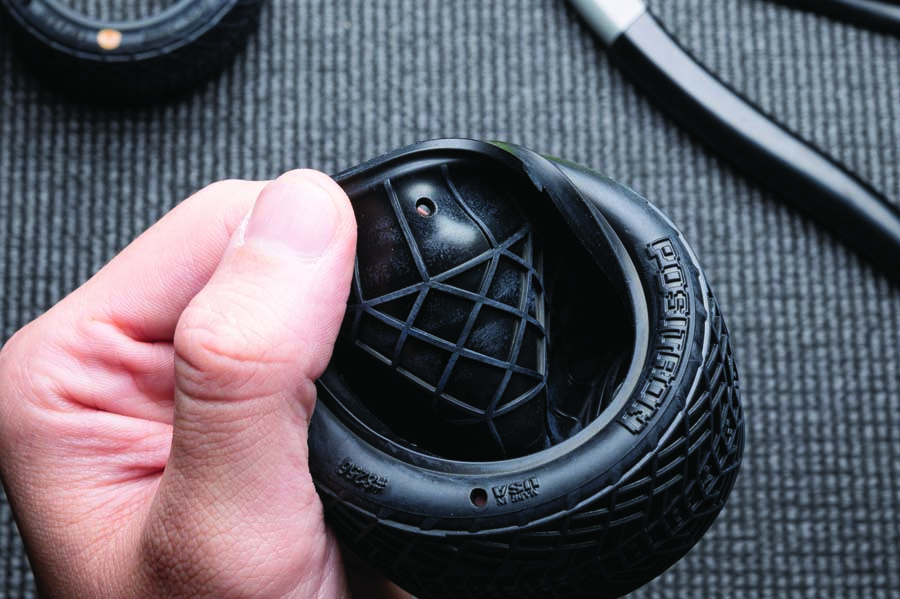
Should you vent the tires or wheels? Many wheels come with pre-drilled holes. It is best to also vent the tires for two reasons. First, firmer, closed-cell foam inserts commonly used in race applications can effectively block the wheel vent hole, so holes in the tire will better allow air to escape and re-enter. Second, as a tire spins, debris will be flung to the outside and stands at least some chance of exiting a tire vent hole.
Pro-Line’s innovation designer and experienced racer Gerardo Gonzalez recommends adding two 1/8-inch holes to the tread area of the tire on opposite sides. This ensures one vent hole is always exposed, and one of the absolute best tools for venting tires is a leather punch. These are inexpensive and can be found online or at most hardware stores.
STORAGE
The UV rays found in direct sunlight are the enemy of RC tires. Store your tires in the bag they came in (if it’s sealable) or a similar sealable bag. Place your bags of tires in a bin and keep it in a cool, dry place.
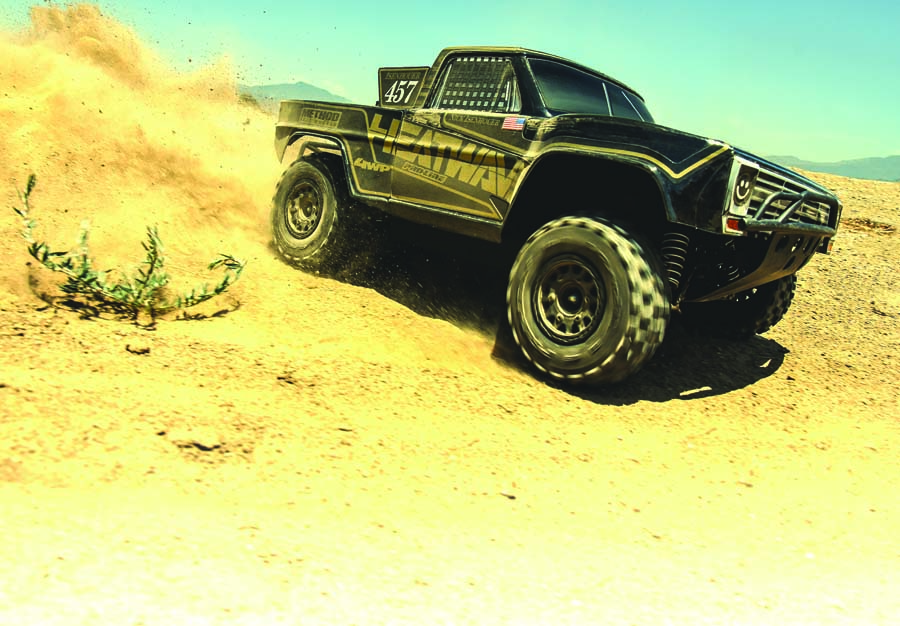
When they’re on the vehicle, Pro-Line recommends storing the vehicle on a stand to avoid flat spots. That said, quality RC tires are so soft and flexible that running the tires until they reach normal temperatures will remove any flat spots.
Tires should also be stored clean. You can clean your tires with Simple Green. Just spray it on, scrub the tire as needed, and rinse. Just be careful to not soak the tire. Use only enough water to remove the Simple Green.
COMPOUNDS
All sorts of rubber materials and blends of materials are used to make RC tires. Each specific mixture is called a compound, and while compounds each offer a variety of differing characteristics, they are commonly separated primarily by hardness as the key differentiator.
In general, and all other factors being equal, softer-compound tires provide more traction. They also wear faster. In contrast, firmer-compound tires provide less traction but last longer.
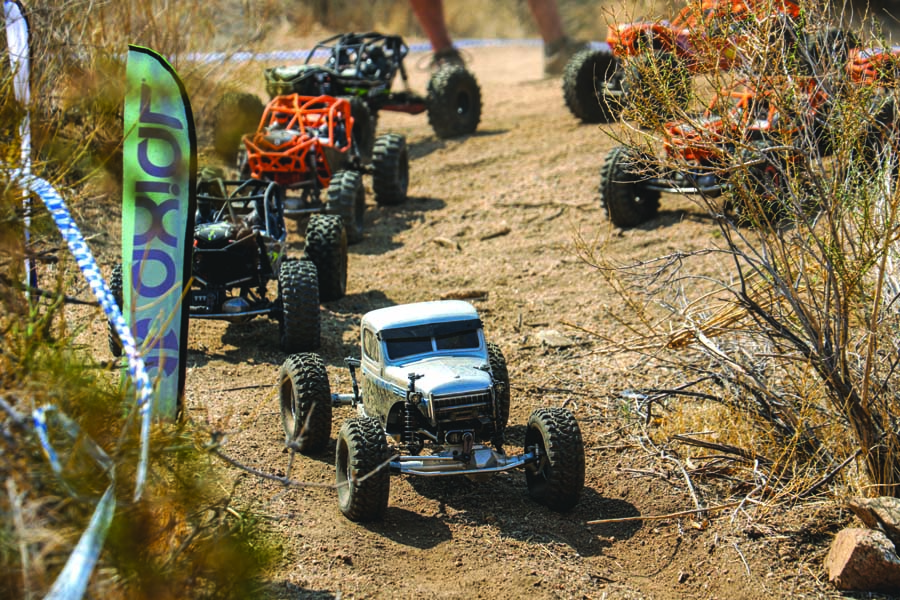
While the idea of more traction seems ideal, softer isn’t always better. In rock crawling, for example, softer tires might grip better, but they often fold over on side-hill situations much easier. In racing, a car needs to rotate around corners. Use too soft a rear compound and the car won’t want to turn.
They key is finding the right balance of front and rear traction for your racing surface. Also, if a racing tire is too soft, it too will fold over and distort in turns, resulting in inconsistent handling. Overly soft front tires can also lead to the dreaded traction roll, which is when a front tire bites too much when cornering and literally flips the car over. Besides choosing an appropriately firm compound, firm tire inserts can help make extremely soft tires perform better.
Temperature can play a big role in choosing the right compound. A soft compound might be perfect early in the season but could be entirely too soft in the heat of summer. And, like the whole tire folding its sidewall, a tire that is too soft might have the pins or blocks that make up the tread pattern fold over. This can reduce traction and cause sluggish, unresponsive handling. Companies such as Pro-Line offer specific compounds for certain track compositions such as clay.
TREAD PATTERNS
When selecting a tire for a track, the fastest way to find out what works is to ask. You’ll likely get a few different answers, but inquiring first will greatly reduce your choices and thus cut down on the need for a lot of trial and error via testing. In general, the smaller the tread for the harder the surface and the larger the tread for the loamier the surface. The main exception is off-road carpet tires, which have pronounced tread to grab and grip the carpet material.
For scale crawlers, tread pattern will be a matter of personal preference. It’s easy. Just select the tire that looks the part. However, comp crawlers, like racers, want to find the specific tread that works best for the terrain they run. Frequent choices for comp use are the Pro-Line Trencher and Hyrax, but one of the most popular comp 1.9 tires is Pro-Line BFG Krawler T/A KX, which has wider spacing between tread lugs. This extra spacing helps with grip. For classes that allow 2.2-sized tires, the Pro-Line Ultra Comp is a preferred choice.
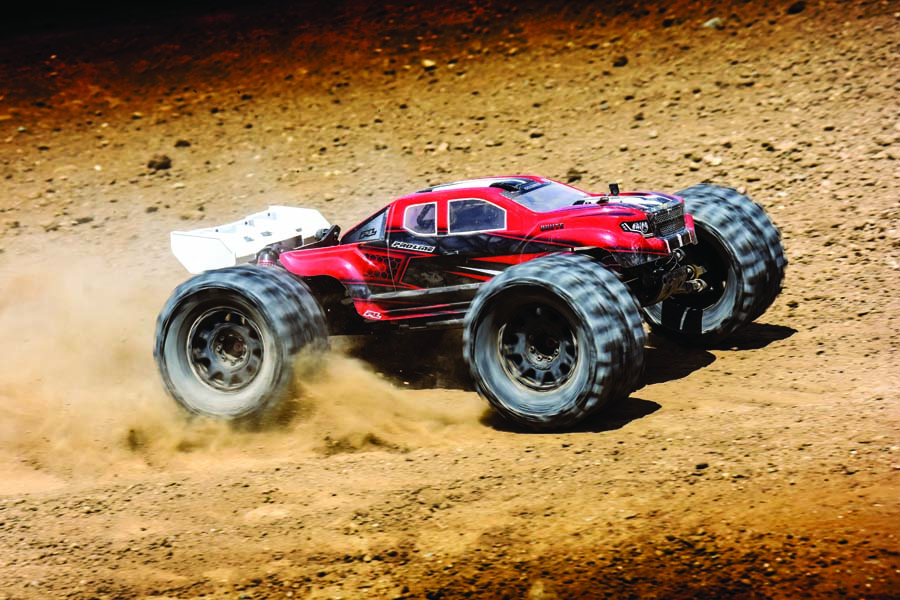
INSERTS
Like everything else on your RC car, the right setup is the one that works. Inserts are no different. In general, high-speed racing applications favor a firm, closed-cell foam insert. You can break these in by hand before installing them, but they are ready to use right out of the bag.
Most rock-crawling setups favor a firmer rear insert. This helps stability and helps prevent the rear tire from torque-twisting and wrapping up in obstacles. Pro-Line’s Dual Stage Rock Crawling foams are a popular choice for rear tires. Many comp crawlers use these front and rear to prevent the tire from folding over on challenging side hills.
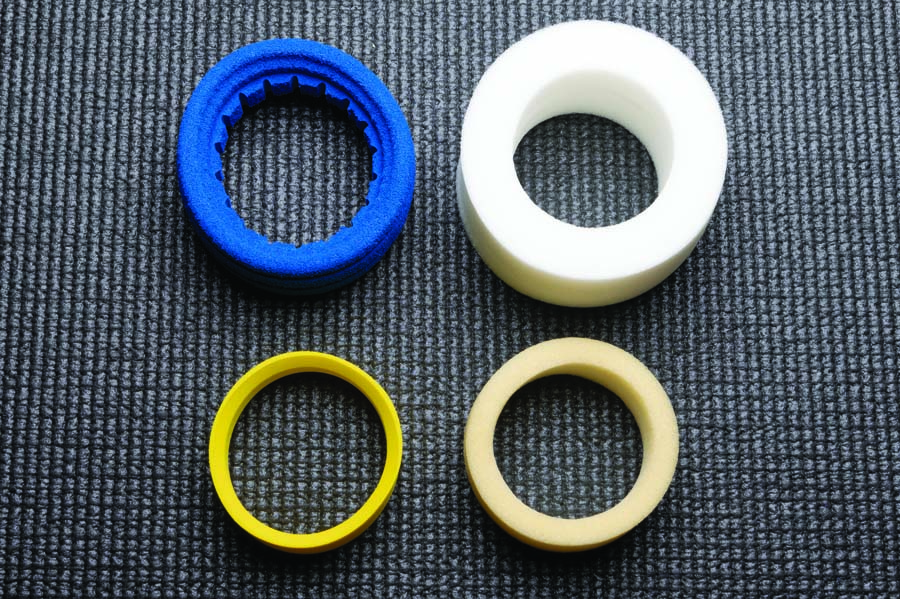
For racing, closed-cell foam inserts are quickly becoming the standard, but open-cell inserts are still used.
3D-printed inserts are gaining popularity in rock crawling. The idea is to provide sidewall support for side-hilling while still allowing the insert to be soft, which allows the tire to conform to the terrain. There are a lot of designs, a lot of materials being used, and a lot of very vocal fans of certain brands, but it’s still new and will likely require some experimenting to find a setup that works for you. Be wary of molded silicone type inserts that look like 3D-printed inserts. While they look the same, these inserts can be extremely heavy and, even worse, not provide the performance sidewall support characteristics 3D-printed inserts are designed to achieve.
TIRE GLUING
The key to successful gluing is proper preparation via cleaning. Using a rag or a paper towel, clean the gluing surfaces of both the wheels and tires with either rubbing alcohol or Simple Green. The only glue you should ever use to glue RC tires is a CA glue specifically blended for RC tire use. Superglues designed for household use are not recommended for gluing tires to wheels. Also, RC airplane CA blends will work, but be warned—the RC airplane idea of “thin” is very thin. CA glue also has a shelf life. As it gets older, it takes longer to cure.
Less is more when it comes to gluing tires. You do not need to get the entire bead area in one shot. If glue is oozing out, you’re using too much. Gluing tires is easy. Pull a portion of the tire back, add a small amount of CA glue, and carefully seat the tire on the wheel. Make sure the bead is perfectly seated. Perform this technique in four spots on one side of the tire and move on to the next tire. By the time you finish the fourth tire, you can check the first tire for spots that don’t have glue. Don’t rush, and remember, thicker CA glue takes longer to cure.
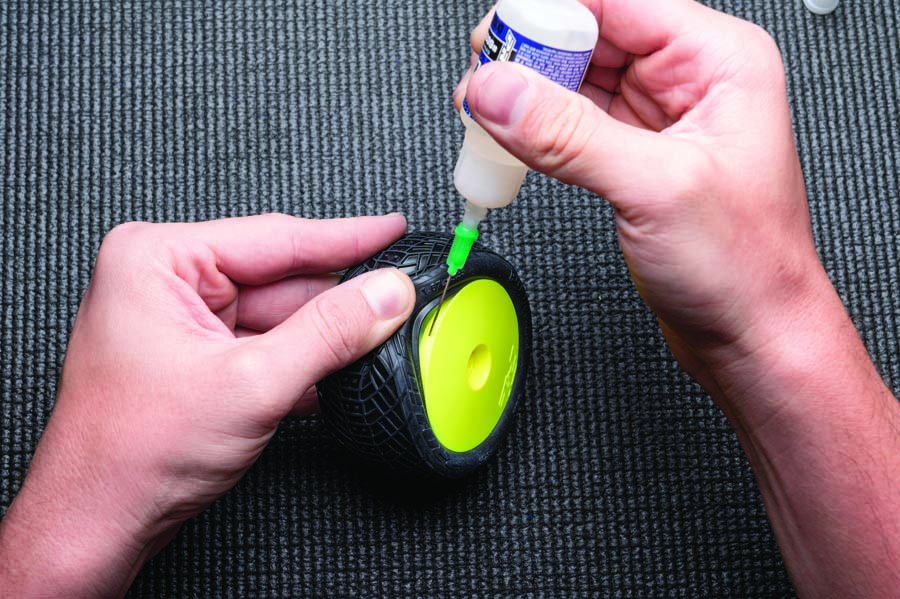
Text by Matt Higgins
Images by Laurent Short and courtesy of Horizon Hobby



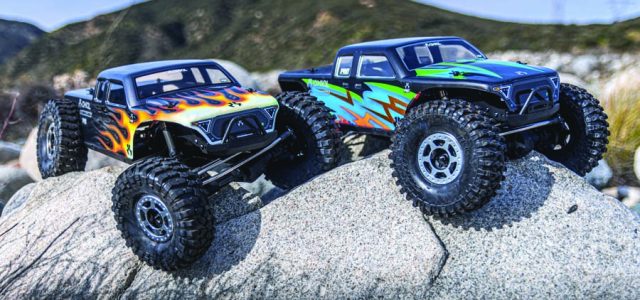




![RC Car Action - RC Cars & Trucks | This 1/3 scale 125cc V10 Buggy is CRAZY [VIDEO]](https://www.rccaraction.com/wp-content/uploads/2018/05/V10-HP.jpg)
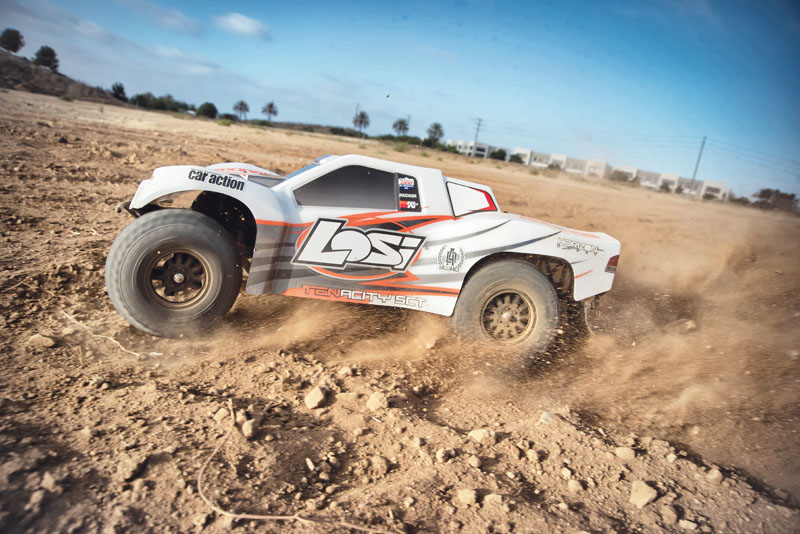

 Stay up to date with the latest information, sign up for our FREE newsletter today.
Stay up to date with the latest information, sign up for our FREE newsletter today.
